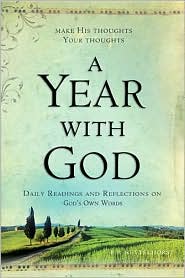That the world is an evil place seems self-evident to many people. They demonstrate it by simply pointing to the latest headlines of war, crime, disaster, racism, and worsening test scores. Pundits warn us ominously that America is running higeldy pigeldy down the road to Hell.
But is this negative perception, fueled by endless news accounts of horrible things, an accurate one? Is life barely more than miserable? Let’s consider.
An article in a recent Scientific American indicated that at any given moment, 93 percent of the world’s human beings feel happy about their lives as a whole. These percentages of happiness remained constant regardless of income, education, or the place individuals happened to live. If things are as bad as everyone suggests, then how could this be? But think about your own life. Are you planning on slitting your wrists as soon as you finish reading this article? Probably not. Chances are, you’re pretty comfortable and generally content just now. Think you’re unique? Think again.
The world’s population stands at about 6.3 billion. Many think this is a bad thing and moan endlessly about the population explosion. But stop and ask a simple question: why are there so many people? Was sex really invented in the 60s? Have birth rates skyrocketed? Not at all. Birthrates are actually declining. So the question remains: why so many human beings?
Because not so many people are dying!
Human life expectancy in 1800 was 40, while the world population was only about 900 million. Infant mortality was rampant. Disease proliferated. Starvation was common. Since then, life expectancy has nearly doubled, and the population has skyrocketed as a consequence. According to CIA statistics recorded in the CIA World Factbook, less than 0.9 percent of the world population died last year. That’s less than one percent. That’s from all causes. Or to put it another way, a bit more than 99.1 percent of the human race didn’t go to their graves last year.
So let’s consider some obvious implications.
The number of people who have died this year because of crime? Less than one percent of the human race.
The number of people who have died because of natural disasters? Less than one percent.
The number of people who have died because of terrorism? Less than one percent.
The number of people who have died because of starvation? Less than one percent.
The number of people who have died because of diseases? Less than one percent.
The number of people who died as a consequence of war? Less than one percent.
Statistics like those would seem to demonstrate that the world’s not quite so awful as the nightly news would like us to believe. (Stopping to consider the last time one heard of a life insurance company going bankrupt might be another bit of evidence.)
Certainly there is suffering and evil and doubtless the headlines on today’s paper are filled with ugly information. But the real reason the news is almost always bad is because bad is unusual and newspapers and television are interested in novelty.
Consider: do the newspapers or television report on the millions and millions of people who went to work today, did their jobs, came home, kissed their spouses and children and had a quiet evening? Of course not. That would be boring. Instead, they’ll report on the single whacko who went to his job and machine-gunned all his coworkers. Now that’s interesting.
Humanity is warlike and violent, right? Then why, according to the CIA, is only two percent of the world’s gross economic production devoted to defense spending? That means that ninety-eight percent of what the world spends its money on each year is for stuff other than making guns and bombers.
For much of human history, human beings spent a lot of time concerned about having enough food to eat. Famines were common. People regularly worried about whether they’d be able to eat today. Now, the biggest health concern in the United States is obesity. We have so much food that we have to spend gobs of cash on fancy ways to lose the extra weight it puts on our bodies.
In 1804 the former Secretary of the Treasury, Alexander Hamilton was shot to death in a duel with the Vice President of the United States, Aaron Burr. In the twenty-first century, commentators become apoplectic when the Vice President says a bad word to a political opponent. They bemoan the loss of civility in political dialogue. I don’t know about you, but if the worst thing a politician does now is call his opponents “girly men,” we have little to complain about.
Hard as I try, I have difficulty thinking that this is the worst of all possible worlds, or that the world is getting worse and worse. Quite the opposite. Take a break from the nightly news. Go outside, notice the blue sky and green grass. Take a deep breath. Relax. Put things in perspective. Then smile.
Friday, August 07, 2009
The Good Old Days
Ah yes, the good old days, they were so lovely. A trip to the dentist with no anesthetic while he drilled and poked. What memories that brings back! A world without antibiotics, when a scratch could kill you. The good old days, without inoculations, when millions suffered or died from what are now preventable diseases. The good old days, when horse manure filled the streets and flies spread illness, when water was not safe to drink so people all had to all drink beer—but since there were no refrigerators, it was warm.
The good old days, when hurricanes came without warning because, without satellites, no one could see them building in the Atlantic weeks ahead of time. The good old days when the news from across the country took a week to get to us, when communicating with a loved one meant waiting weeks for a letter. Ah, the good old days when people spent three weeks crossing the Atlantic at the mercy of winds in a tiny boat. The memories! When life expectancy was but 45, and 40 percent of children died before their fifth birthday.
The good old days when instead of worrying about obesity people worried about famines and starving to death. The good old days, when doctors did more harm than good. The good old days?
The Good Old Days—They Were Terrible is an interesting book written by Otto L. Bettman. Originally published in 1974 by Random House it is still available today. In it, he describes the way things really were in the relatively recent past. Given how much criticism is commonly thrown at schools today, it is intriguing to discover what Bettman has discovered about schools of the past. In his book he writes, “Criticism of the public school system…usually takes the form of nostalgia for its ‘Golden Age,’ the days of the Little Red Schoolhouse. Here, it is believed, was the wellspring of the nation’s greatness, where the three R’s were taught in an atmosphere of patriotism and simple virtue, where individualism was sanctified….In a time of widespread educational hysteria it is a vision hard to resist; however, it is not an accurate one.”
He reports, in contrast to the rose-colored memories:
Bettman demonstrates that the extent of education in the not so distant past was remarkably poor. He relates that in 1890 barely twenty percent of all African-American children received any education at all, and that education, for those twenty percent who were lucky enough to get it, amounted on average to about 100 days worth of instruction. One might be tempted to imagine that such poor education was something only minorities suffered from in the past. Not at all. City schools, according to Bettman, were routinely plundered by political bosses, who packed school boards with their own cronies. The result was schools that were overcrowded and under funded, where many teachers were doing well just to maintain order. The New York commissioner of education admitted in 1871 that “thousands of children leave school without being able to read or write.” And the percentages of those who even went to school to begin with was not high, especially among the poor and immigrant groups, who, despite compulsory education laws, tended to keep their children at home so they could work.
Bettman demonstrates that many of the problems facing the world today—education being just one of his examples— are problems that it has faced all along. In many, many respects, conditions are either unchanged or actually considerably better today than they were in the supposed “good old days.”
In the Los Angeles Times I’ve read opinion pieces, as well as seen reviews for books, such as We Are Now Beginning Our Descent, by James Meek, which argue that the West, and America in particular, are in their twilight years and face inevitable decline. What startles me in such pieces is the remarkable historical amnesia, since the chattering classes were saying much the same thing in the years between the first and second World Wars. Otto Spengler, a German scholar, had quite a hit on his hands when he wrote his book, The Decline of the West, published in two volumes in 1926 and 1928.
Remarkably, the West somehow managed to not just survive Spengler’s critique, depression, world war, and a cold war, but to prosper and even expand its influence, much to the disappointment of pessimists everywhere. Given the pattern of history, I’m always puzzled by those who imagine that the world is getting worse and worse, or predict the worst possible outcomes. But then most people don’t pay much attention to history.
The good old days, when hurricanes came without warning because, without satellites, no one could see them building in the Atlantic weeks ahead of time. The good old days when the news from across the country took a week to get to us, when communicating with a loved one meant waiting weeks for a letter. Ah, the good old days when people spent three weeks crossing the Atlantic at the mercy of winds in a tiny boat. The memories! When life expectancy was but 45, and 40 percent of children died before their fifth birthday.
The good old days when instead of worrying about obesity people worried about famines and starving to death. The good old days, when doctors did more harm than good. The good old days?
The Good Old Days—They Were Terrible is an interesting book written by Otto L. Bettman. Originally published in 1974 by Random House it is still available today. In it, he describes the way things really were in the relatively recent past. Given how much criticism is commonly thrown at schools today, it is intriguing to discover what Bettman has discovered about schools of the past. In his book he writes, “Criticism of the public school system…usually takes the form of nostalgia for its ‘Golden Age,’ the days of the Little Red Schoolhouse. Here, it is believed, was the wellspring of the nation’s greatness, where the three R’s were taught in an atmosphere of patriotism and simple virtue, where individualism was sanctified….In a time of widespread educational hysteria it is a vision hard to resist; however, it is not an accurate one.”
He reports, in contrast to the rose-colored memories:
“…the teacher was more warder than instructor, his routine being more physical than intellectual. Some school boards in selecting a new teacher made it a rule to pick a strong fellow—especially on the frontier, where, according to Hamlin Garland, ‘baseness and vulgarity’ prevailed among the older boys. Biting, eye-gouging and slug scuffle matches were favorite sports, but boys saved their most barbaric excesses for strangers….a Miss Barstow, taught public school in Canton, Mass. On October 8, 1870, the young woman, said to be in feeble health, punished four boys for unruly conduct by shutting them in the school building after class was out. Finally, when she released them, Miss Barstow is said to have given the boys ‘a slight reprimand.’ Their response was immediate; they stoned her to death.”
Bettman demonstrates that the extent of education in the not so distant past was remarkably poor. He relates that in 1890 barely twenty percent of all African-American children received any education at all, and that education, for those twenty percent who were lucky enough to get it, amounted on average to about 100 days worth of instruction. One might be tempted to imagine that such poor education was something only minorities suffered from in the past. Not at all. City schools, according to Bettman, were routinely plundered by political bosses, who packed school boards with their own cronies. The result was schools that were overcrowded and under funded, where many teachers were doing well just to maintain order. The New York commissioner of education admitted in 1871 that “thousands of children leave school without being able to read or write.” And the percentages of those who even went to school to begin with was not high, especially among the poor and immigrant groups, who, despite compulsory education laws, tended to keep their children at home so they could work.
Bettman demonstrates that many of the problems facing the world today—education being just one of his examples— are problems that it has faced all along. In many, many respects, conditions are either unchanged or actually considerably better today than they were in the supposed “good old days.”
In the Los Angeles Times I’ve read opinion pieces, as well as seen reviews for books, such as We Are Now Beginning Our Descent, by James Meek, which argue that the West, and America in particular, are in their twilight years and face inevitable decline. What startles me in such pieces is the remarkable historical amnesia, since the chattering classes were saying much the same thing in the years between the first and second World Wars. Otto Spengler, a German scholar, had quite a hit on his hands when he wrote his book, The Decline of the West, published in two volumes in 1926 and 1928.
Remarkably, the West somehow managed to not just survive Spengler’s critique, depression, world war, and a cold war, but to prosper and even expand its influence, much to the disappointment of pessimists everywhere. Given the pattern of history, I’m always puzzled by those who imagine that the world is getting worse and worse, or predict the worst possible outcomes. But then most people don’t pay much attention to history.
Tuesday, August 04, 2009
Astronomy picture of the day

NASA offers an astronomy picture of the day every day, at Astronomy Picture of the Day. Today's was very odd as it shows three suns rising over Gdansk, Poland.
Chances for Peace
Interesting article at Slate.com by John Horgan arguing that war may not forever be a part of human society:
If nothing else, it does put things in perspective a bit and points out that really, things are not getting worse and worse.
A recent decline in war casualties—especially compared to historical and even prehistorical rates—has some scholars wondering whether the era of international war may be ending.
Counting casualties is fraught with uncertainty; scholars' estimates vary according to how they define war and what sources they accept as reliable, among other factors. Nevertheless, a clear trend emerges from recent studies. Last year, 25,600 combatants and civilians were killed as a direct result of armed conflicts, according to the 2009 Yearbook of SIPRI, the Stockholm International Peace Research Institute, to be released Aug. 17. Two thirds of these deaths took place in just three trouble spots: Sri Lanka (8,400), Afghanistan (4,600), and Iraq (4,000). In contrast, almost 500,000 people are killed each year in violent crimes and well over 1 million die in automobile accidents.
If nothing else, it does put things in perspective a bit and points out that really, things are not getting worse and worse.
Subscribe to:
Posts (Atom)





